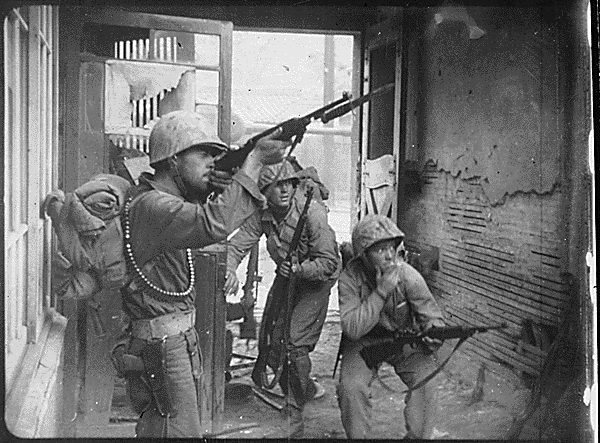A Brief Look at the Development of the M1 Carbine
 The M1 Carbine is one of the first successful intermediary long guns in the modern U.S. arsenal. It was designed in 1941 around a cartridge intended to bridge the gap between the pistol and the full-power battle rifle and was intended primarily for use by rear-echelon troops, weapon crews, engineers, and other specialists serving in World War II. It was also used by Americans in Korea and by other allied nations and police forces throughout much of the Cold War-era.
The M1 Carbine is one of the first successful intermediary long guns in the modern U.S. arsenal. It was designed in 1941 around a cartridge intended to bridge the gap between the pistol and the full-power battle rifle and was intended primarily for use by rear-echelon troops, weapon crews, engineers, and other specialists serving in World War II. It was also used by Americans in Korea and by other allied nations and police forces throughout much of the Cold War-era.
Historically, carbines have typically been a shorter, lighter version of a primary battle rifle, often chambered in the same cartridge. Carbines were first developed for cavalry units in the late 16th century as they were easier to handle and fire on horseback. The U.S. Army began adopting carbines shortly before the Civil War and continued to do so throughout the 19thCentury. This changed with the adoption of the M1903 Springfield rifle as its overall length was reduced enough that a separate carbine-version was deemed unnecessary.
As the United States entered World War II, it had a new primary battle rifle in the M1 Garand. The nine-and-a-half-pound rifle was a force multiplier for combat infantrymen but proved too unwieldy and difficult to master for rear-echelon and specialist troops. The nature of combat in World War II meant that these troops were more likely to encounter enemy forces and were ill-equipped for combat, being armed with pistols and submachine guns, neither of which were suitable for typical mid-range engagements of up to 300 yards.
The U.S. Army Infantry Board noted as much in 1938 when it laid out recommendations for a new light rifle for support troops, stating, “Approximately one-fifth of the combat personnel will be serving special weapons or carrying ammunition. These men must be equipped with a light weapon, effective at 300 yards. Infantry Board tests prove that pistols and revolvers, even with shoulder holster stocks, fail to meet requirements…”
In 1940, the Ordnance Corps agreed that a new firearm was needed that was as easy to carry as a pistol but that performed more like a rifle. The design criteria include five main requirements:
- The light rifle could not exceed 5 pounds.
- It had to be effective to 300 yards.
- It should fire in semi-auto or select fire.
- It had to be chambered in a new .30 caliber cartridge that was designed by Winchester.
- It had to take detachable box magazines.\
Less than a year later in the Spring of 1941, nine test models were evaluated by the Ordnance Committee. None of the models tested were accepted and it was decided to hold a second round of testing in the Fall.
At the same time, a team at Winchester led by Edwin Pugsley had been working on a .30-06 rifle that used a gas-tappet short stroke system based on David Marshall Williams design that they felt was promising. The War Department agreed and felt that it could be scaled down to the new, smaller cartridge and submitted to the 2nd round of trials. Winchester had very little time before the 2nd trials and famously designed a prototype in just 13 days. If that’s not dramatic enough, their hand-built prototype had reliability issues that would have kept it from competing in the trials were they not fixed by opening the gas port with just hours remaining before the submission deadline. What’s more incredible is that their design won the trials and went on to become the M1 Carbine.
Production of the M1 Carbine began in the Fall of 1942. In total, over six million M1 Carbines were produced during World War II. That’s two million more carbines than there were M1 Garand rifles. The carbines were built by ten different manufacturers, with the over 2.5 million of them made by Inland Manufacturing Division of General Motors.
For a more detailed look at the development of the M1 Carbine as well as it’s features and service history, check out our latest episode of In the Armory on YouTube at https://www.youtube.com/watch?v=FkiKHPWmOwY&t=1783s